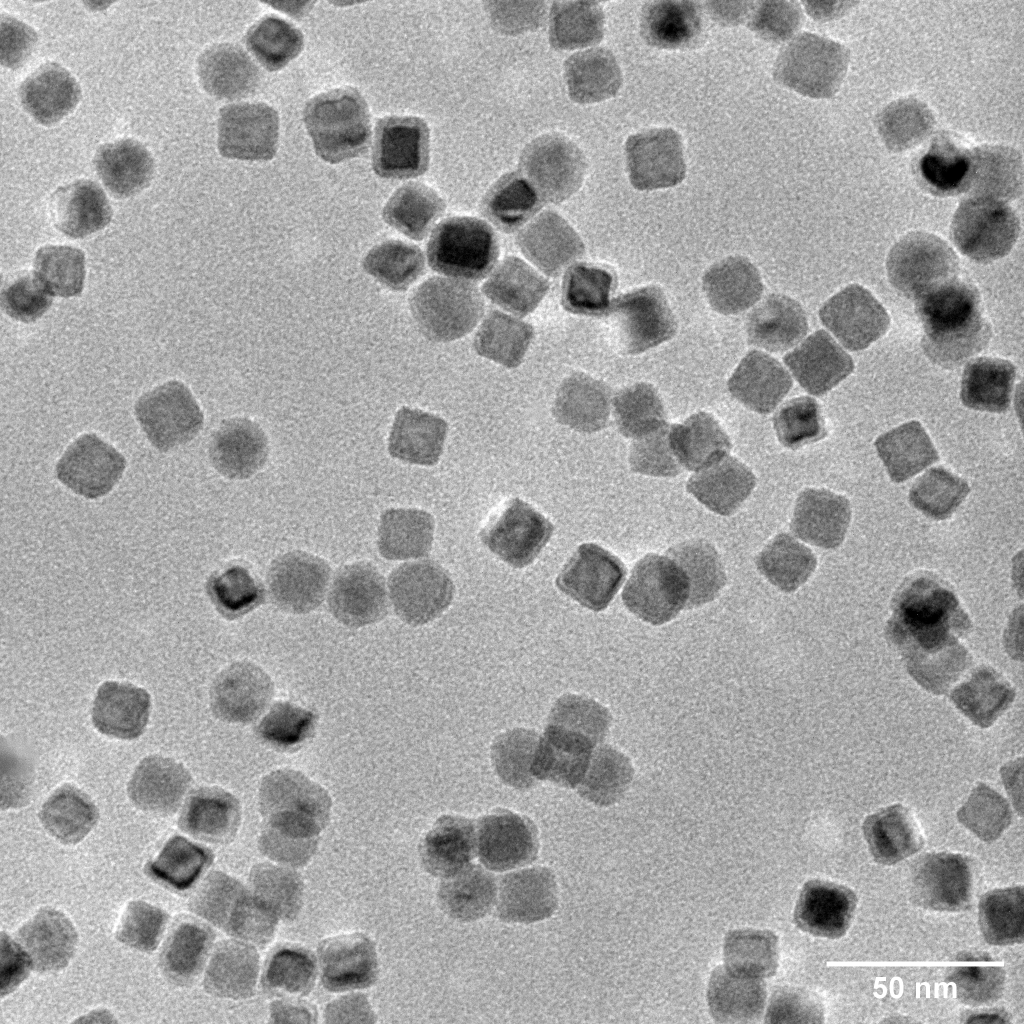Magnetic nanoparticles (MNPs) have become a focal point in nanoparticle engineering. Their unique magnetic properties, combined with their biocompatibility, have positioned them as a promising tool in various scientific and medical domains. As research progresses, the potential applications of these nanoparticles continue to expand, offering solutions to challenges once deemed insurmountable.
Magnetic Particle Imaging (MPI)
Magnetic particle imaging (MPI) is a revolutionary advancement in the biomedical imaging landscape. Utilising magnetic nanoparticles, specifically iron oxide nanoparticles, as tracers, MPI capitalises on their unique magnetic behavior under an externally applied magnetic field. The core-shell structure of these nanoparticles ensures a robust response to the external magnet, producing a clear and distinct signal.
Unlike traditional imaging techniques, MPI’s signal is directly proportional to the tracer mass, which provides a quantifiable measure. This eliminates the challenges of tissue background signal or signal attenuation, often encountered in other modalities. Moreover, the chemical stability of these nanoparticles ensures consistent performance, making MPI a formidable tool when seeking high precision and unparalleled clarity in imaging[2].
Nanoscale Thermal Cancer Therapy
Magnetic nanoparticles, particularly those with a core-shell structure, have demonstrated a remarkable ability to convert magnetic energy into heat through a process known as magnetic hyperthermia. When these particles are subjected to an external magnetic field, their magnetic moments oscillate, generating heat due to magnetic hysteresis losses.
This heat generation is a function of the type of magnetism exhibited by the nanoparticles and their magnetic materials composition. By controlling the frequency and amplitude of the externally applied magnetic field, researchers can modulate the amount of heat produced. This precise control allows for the targeted eradication of cancerous cells.
The surface functionality of these nanoparticles can be further engineered to ensure they bind specifically to tumour cells, ensuring that the heat is localised to the cancer site. As a result, nanoscale thermal cancer therapy offers a highly targeted approach, minimising collateral damage to surrounding healthy tissues and enhancing the therapeutic index of cancer treatments[2].
Magnetic Actuation of Drug Release
Magnetic nanoparticles, especially those composed of iron oxide, have emerged as a pivotal tool in the domain of targeted drug delivery. Their inherent magnetic properties, combined with their ability to respond to an external magnetic field, have opened up avenues for controlled and site-specific drug release.
When these nanoparticles are functionalised with therapeutic agents, they can be directed to specific tissue sites using an external magnet. The magnetic behavior of these particles, influenced by factors such as their magnetic moments and types of magnetism, allows for the release of the drug payload in response to changes in the magnetic field. This external control mechanism ensures that therapeutic agents are released in a spatially and temporally controlled manner.
By harnessing this capability, researchers can ensure that drugs reach their intended targets, such as tumour sites or inflammation zones, with high precision. This not only maximises the therapeutic efficacy of the drug but also significantly reduces the risk of systemic side effects, offering a more tailored and patient-centric approach to treatment[2].
Environmental Solutions
Beyond the medical field, magnetic nanoparticles, particularly magnetite nanoparticles, have shown potential in addressing environmental challenges. One notable application is in water treatment, where these particles can aid in the removal of contaminants, ensuring cleaner and safer water supplies[3].
Diagnosis and Treatment of Cancer
Magnetic nanoparticles are not just tools for treatment; they’re also invaluable in the diagnosis of diseases, especially cancer. Their potential as MRI contrast agents, combined with their capabilities in drug delivery and magnetic hyperthermia, positions them as a multifaceted solution in the battle against cancer[5].
Interested in Magnetic Nanoparticle Production?
At Nikalyte, we recognise the transformative potential of magnetic nanoparticles. Their diverse applications, from MRI contrast agents to environmental solutions, underscore their significance in modern science and medicine. For experienced professionals in the field, the future holds immense promise, and we’re excited to be at the forefront, providing products that harness the full potential of these nanoparticles.
References:
- Dash S, Das T, Patel P, Panda PK, Suar M, Verma SK. Emerging trends in the nanomedicine applications of functionalized magnetic nanoparticles as novel therapies for acute and chronic diseases. J Nanobiotechnology. 2022 Aug 31;20(1):393. doi: 10.1186/s12951-022-01595-3. PMID: 36045375; PMCID: PMC9428876.
- Rivera-Rodriguez A, Rinaldi-Ramos CM. Emerging Biomedical Applications Based on the Response of Magnetic Nanoparticles to Time-Varying Magnetic Fields. Annu Rev Chem Biomol Eng. 2021 Jun 7;12:163-185. doi: 10.1146/annurev-chembioeng-102720-015630. Epub 2021 Apr 15. PMID: 33856937.
- Nguyen MD, Tran HV, Xu S, Lee TR. Fe3O4 Nanoparticles: Structures, Synthesis, Magnetic Properties, Surface Functionalization, and Emerging Applications. Appl Sci (Basel). 2021 Dec;11(23):11301. doi: 10.3390/app112311301. Epub 2021 Nov 29. PMID: 35844268; PMCID: PMC9285867.
- Bao Y, Wen T, Samia AC, Khandhar A, Krishnan KM. Magnetic Nanoparticles: Material Engineering and Emerging Applications in Lithography and Biomedicine. J Mater Sci. 2016 Jan;51(1):513-553. doi: 10.1007/s10853-015-9324-2. Epub 2015 Sep 1. PMID: 26586919; PMCID: PMC4646229.
- Alromi DA, Madani SY, Seifalian A. Emerging Application of Magnetic Nanoparticles for Diagnosis and Treatment of Cancer. Polymers (Basel). 2021 Nov 27;13(23):4146. doi: 10.3390/polym13234146. PMID: 34883649; PMCID: PMC8659429.

